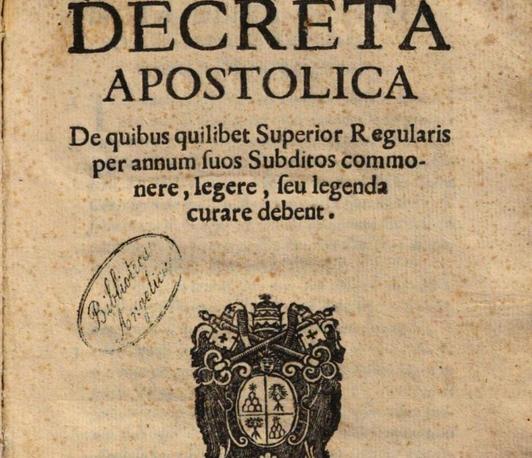Entangled Congregations? Some examples from the Congregations of Council, Bishops and Regulars, and Ecclesiastical Immunity (1570ca-1700)
- Datum: 16.05.2023
- Uhrzeit: 17:00 - 19:00
- Vortragende(r): Massimo Carlo Giannini (Università degli Studi di Teramo - Universidad Complutense de Madrid)
- Ort: mpilhlt
- Raum: G503 and online
- Gastgeber: Benedetta Albani
- Kontakt: giuliani@lhlt.mpg.de

In the modern age, the Congregations of the Papal Curia have largely remained in the shadows, confined to a technical and institutional sphere. This situation has given rise to a dual interpretation, characterized by emphasizing early centralizing aspects and a significant degree of analytical compartmentalization. These elements, in turn, are connected to the necessity of examining specific areas of institutional action and consistently seeking broader and long-term strategic lines of action. However, this approach has led to distortions and tensions.
Only in the years following the Second Vatican Council did profound changes in curial structures provide the impetus for a series of studies and historical research on the world of the Congregations. These studies began with Cardinalium Concilii Tridentini Interpretum (instituted in 1564), de Propaganda Fide, dei Riti, and dell’Immunità ecclesiastica. Significant contributions have been made, particularly regarding the Congregation of the Holy Office.
Other important studies have focused on reconstructing the activities of the Congregations of the Index, of Saints, of Good Government, and of Bishops and Regulars. Additionally, notable research has emerged in connection with interests related to the reconstruction of the economic, architectural, and urban planning aspects of Congregations such as the Fabbrica di San Pietro and those responsible for the streets, bridges, and fountains.
A polycentric structure can be postulated for the Curia, which can adapt to its leader while also generating friction and resistance. In a similar vein, the research conducted by scholars as Antonio Menniti Ippolito, Giovanni Pizzorusso, and Benedetta Albani has revealed that the concept of papal centralism must be significantly nuanced when examining the practical activities of certain Congregations, free from rigid frameworks and biases. Although approaching the subject from distinct perspectives, these scholars have suggested that these bodies represent a multifaceted and non-monolithic manifestation of papal power rather than mere executive instruments of the Pope. Conversely, little is known about the relationships, both formal and informal, that the Congregations maintained with the prominent tribunals of the Holy See, such as the Apostolic Penitentiary, the Reverend Apostolic Chamber, the Signatura of Grace, and the Sacred Rota.
A crucial aspect to consider is the composition of these bodies, characterized by the presence of cardinals and prelates. However, there is a clear distinction between those who formally belonged to these bodies and those who actively and consistently participated in their operations. In addition to the cardinals, the secretaries played a vital role.
The aim of this paper is to examine and analyze how the work of certain congregations within the Roman Curia should be reevaluated by considering the intertwining of interests and jurisdictions that cannot be adequately explained through traditional legal and formal interpretations. Instead, we require an approach that comprehends the internal dynamics of the Curia, considering personnel, expertise, and institutions in their full complexity, rather than reducing them to a rigid bureaucratic framework. To truly comprehend the realm of the Congregations and the Curia as a whole, it is essential to consider multiple processes at play: the accumulation of practices over time, the layering of responsibilities, the coexistence of different competences, the conflicts arising from overlapping jurisdictions, and the strategies pursued by individual pontificates, among others.
This lecture is part of the lecture series Normative production and decision-making processes in the Roman Curia (16th-20th centuries).
The session is held in English and takes place in a hybrid format, in person at the Institute's premises and online.
Participants may register here.